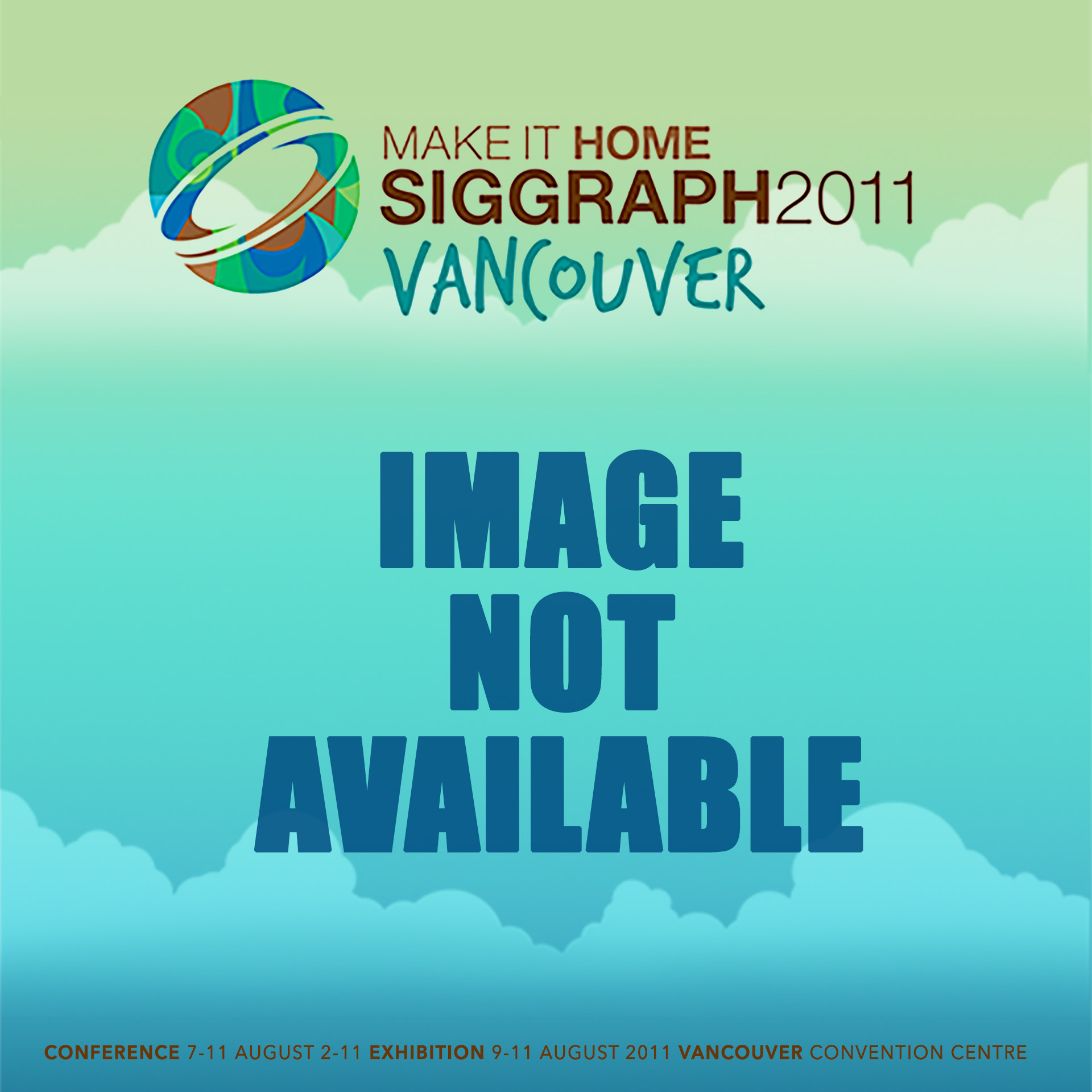“Microgeometry capture using an elastomeric sensor” by Johnson, Cole, Raj and Adelson
Conference:
Type(s):
Title:
- Microgeometry capture using an elastomeric sensor
Presenter(s)/Author(s):
Abstract:
We describe a system for capturing microscopic surface geometry. The system extends the retrographic sensor [Johnson and Adelson 2009] to the microscopic domain, demonstrating spatial resolution as small as 2 microns. In contrast to existing microgeometry capture techniques, the system is not affected by the optical characteristics of the surface being measured—it captures the same geometry whether the object is matte, glossy, or transparent. In addition, the hardware design allows for a variety of form factors, including a hand-held device that can be used to capture high-resolution surface geometry in the field. We achieve these results with a combination of improved sensor materials, illumination design, and reconstruction algorithm, as compared to the original sensor of Johnson and Adelson [2009].
References:
1. Alexander, O., Rogers, M., Lambeth, W., Chiang, M., and Debevec, P. 2009. Creating a photoreal digital actor: the digital Emily project. IEEE European Conference on Visual Media Production (Jun), 1–12. Google Scholar
2. Barsky, S., and Petrou, M. 2003. The 4-source photometric stereo technique for three-dimensional surfaces in the presence of highlights and shadows. IEEE Transactions on Pattern Analysis and Machine Intelligence 25, 10, 1239–1252. Google ScholarDigital Library
3. Basri, R., and Jacobs, D. W. 2003. Lambertian reflectance and linear subspaces. IEEE Transactions on Pattern Analysis and Machine Intelligence 25, 2, 218–233. Google ScholarDigital Library
4. Basri, R., Jacobs, D., and Kemelmacher, I. 2007. Photometric stereo with general, unknown lighting. International Journal of Computer Vision 72, 3, 239–257. Google ScholarDigital Library
5. Chen, T., Goesele, M., and Seidel, H.-P. 2006. Mesostructure from specularity. In Proceedings of the IEEE Computer Society Conference on Computer Vision and Pattern Recognition. Google Scholar
6. Daubechies, I., DeVore, R., Fornasier, M., and Güntürk, C. S. 2010. Iteratively reweighted least squares minimization for sparse recovery. Communications on Pure and Applied Mathematics 63, 1, 1–38.Google ScholarCross Ref
7. Francken, Y., Cuypers, T., Mertens, T., Gielis, J., and Bekaert, P. 2008. High quality mesostructure acquisition using specularities. In Proceedings of the IEEE Computer Society Conference on Computer Vision and Pattern Recognition.Google Scholar
8. Freeman, W., Jones, T., and Pasztor, E. 2002. Example-based super-resolution. IEEE Computer Graphics and Applications, 56–65. Google Scholar
9. Goldman, D., Curless, B., Hertzmann, A., and Seitz, S. 2005. Shape and spatially-varying brdfs from photometric stereo. Tenth IEEE International Conference on Computer Vision, 2005. ICCV 2005 1. Google Scholar
10. Han, C., Risser, E., Ramamoorthi, R., and Grinspun, E. 2008. Multiscale texture synthesis. SIGGRAPH ’08: SIGGRAPH 2008 papers. Google Scholar
11. Hernández, C., Vogiatzis, G., Brostow, G. J., Stenger, B., and Cipolla, R. 2007. Non-rigid photometric stereo with colored lights. In Proc. of the 11th IEEE Intl. Conf. on Comp. Vision (ICCV).Google Scholar
12. Johnson, M. K., and Adelson, E. H. 2009. Retrographic sensing for the measurement of surface texture and shape. In Proceedings of the IEEE Computer Society Conference on Computer Vision and Pattern Recognition, 1070–1077.Google Scholar
13. Levoy, M., Pulli, K., Curless, B., Rusinkiewicz, S., Koller, D., Pereira, L., Ginzton, M., Anderson, S., Davis, J., Ginsberg, J., Shade, J., and Fulk, D. 2000. The digital Michelangelo project: 3D scanning of large statues. SIGGRAPH ’00: Proceedings of the 27th annual conference on Computer graphics and interactive techniques (Jul). Google Scholar
14. Nayar, S. K., and Nakagawa, Y. 1994. Shape from focus. IEEE Transactions on Pattern Analysis and Machine Intelligence 16, 8, 824–831. Google ScholarDigital Library
15. Nayar, S. K., Sanderson, A. C., Weiss, L. E., and Simon, D. A. 1990. Specular surface inspection using structured highlight and Gaussian images. IEEE Transactions on Robotics and Automation 6, 2, 208–218.Google ScholarCross Ref
16. Paterson, J., Claus, D., and Fitzgibbon, A. 2005. BRDF and geometry capture from extended inhomogeneous samples using flash photography. Computer Graphics Forum 24, 3, 383–392.Google ScholarCross Ref
17. Ramamoorthi, R., and Hanrahan, P. 2001. An efficient representation for irradiance environment maps. In Proc. of SIGGRAPH, 497–500. Google Scholar
18. Ruiters, R., and Klein, R. 2009. Heightfield and spatially varying BRDF reconstruction for materials with interreflections. Computer Graphics Forum 28, 2, 513–522.Google ScholarCross Ref
19. Szeliski, R. 2006. Image alignment and stitching: a tutorial. Foundations and Trends in Computer Graphics and Vision 2, 1. Google ScholarDigital Library
20. Tagare, H., and de Figueiredo, R. J. 1991. A theory of photometric stereo for a class of diffuse non-lambertian surfaces. IEEE Transactions on Pattern Analysis and Machine Intelligence 13, 2, 133–152. Google ScholarDigital Library
21. Wang, J., and Dana, K. J. 2004. Hybrid textons: Modeling surfaces with reflectance and geometry. In Proceedings of the IEEE Computer Society Conference on Computer Vision and Pattern Recognition, vol. 1, 372–378.Google Scholar
22. Wang, J., and Dana, K. J. 2006. Relief texture from specularities. IEEE Transactions on Pattern Analysis and Machine Intelligence 28, 3, 446–457. Google ScholarDigital Library
23. Woodham, R. J. 1980. Photometric method for determining surface orientation from multiple images. Optical Engineering 19, 1, 139–144.Google ScholarCross Ref
24. XYZRGB. 2010. Reptile DVD: Real World Materials. XYZ RGB Incorporated.Google Scholar




